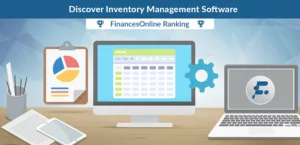Gone are the days when you had to log in and out of different selling channels each time you need to list your products and services. The introduction of inventory management software has successfully met challenges that a business meets as it grows. Human errors during manual adjusting of stock levels result in disappointments and may give a company a bad image. An online business may be prohibited from selling in Amazon or eBay.
The Different Types of Inventory Management Software
These systems can be grouped into different categories and the main way to define a certain type of software is through its intended use and purpose. The mode of work and feature options will also help you to define a category. These are the main types:
· Manually managed inventory system: it is a system that is inspired by the spreadsheet technology. These are simple systems that can be used to track a limited number of products and therefore ideal for small companies or startups that are making the move from fully paper-based stock management to an automated system. A user will have to manually enter formulas before making complex calculations. This is still a challenge because in such a scenario human errors may still occur and cause output inaccuracies.
· Barcode scanning systems: this is another classification of inventory management software that allows companies to process a large number of products and get access to data directly from computerized cash registers. Agents always stay informed regarding their ordering and purchase as soon as it is ready to use thanks to the automatic update of the inventory. Another good thing about these systems is that they are not confined to a limited number of warehouses. On the contrary, inventory can move without obstruction during the process of shipping and packing procedures. Many systems will offer barcode scanning as part of their incorporated feature.
· Advanced radio frequency systems are expensive and ideal for large corporations. However, they are known to provide the biggest guarantee of an efficient and productive business operation. There is an end to end automation provided within a warehouse and this makes it an ideal system for a big company that has thousands of orders to order daily.
Companies are adapting to technological processes in their daily operations so that they can keep ahead of their competitors and also be one step of their customer’s demands. Technology also helps you to run a faster, smarter and more efficient business. It saves you the time you would otherwise spend to manually enter numbers and data into countless spreadsheets. Such a wearisome task surely feels like a nightmare and it a strong reason to make you think about introducing an automated system to do all these tasks for you as you focus on other issues.
The Benefits of Automated Software
You also tie up your money when you keep stock because you can’t spend this money. For better cash flow you want to ensure efficient management of stock levels. Problems arise when your business runs out of cash. When you can see which products are fast moving on multiple sales channels through straightforward analytics and reports you achieve efficiency and productivity. You can also make smarter purchasing decisions. If you are in the health, beauty or pharmaceutical industry the managing of batches and expiry dates is crucial and inventory software enables easy handling of complex units of measurements.
You also get to minimize cost and maximize sales and profits. For instance, if you have multi-channel e-commerce and are currently recording huge sales. In such a busy setup you can manage orders across sales channels so that there is a minimal profit loss. It is also a vital step when you have to restock a demanding product. An automated system ensures you cut down on costs associated with holding the stock for a long time. Keeping stock can also be very expensive. Things such as theft, taxes, and storage fees can slowly eat into your profits. Despite your best efforts of analyzing purchase patterns and past sales, these unforeseen occurrences can affect your company’s productivity. Technology and fashion sometimes may be outdated and this is a normal part of a business.
You also get to integrate your entire business. As soon as a sales rep closes a sale and then creates an order, the inventory system does the rest of the work for you from the sales part to the fulfillment of the order. A user management application enables you to readily create user accounts for each of your staff within a company’s department. Such areas include sales, management and administration and purchasing department. You will just have to create job roles for each user and then assign them permission. These users will be able to access various functions that define different job responsibilities. You will, therefore, prevent users from unauthorized access to stock adjustments or financial reports. Members of the team easily collaborate through task notes. The staff members can also share information on products, suppliers, sales and handover information. All the details of the order and its progress are made fully visible to everyone in the company.
A shipment order is created by the operations team and it includes all the items and quantity of the sales order not yet shipped. This may also include picking and packing lists to be sent to the warehouse for shipping. The customer will mark the order as delivered once he receives it. It is now the duty of the accountant to filter the sales orders depending on the shipment status. After completion of this process, the accountant issues invoices for the shipped orders. The customer invoices can be promptly listed and marked as paid upon payment. On the other hand, you can create a credit note to be issued to a customer if he wants to return a product. Such an efficient management process makes things simple for everyone.








